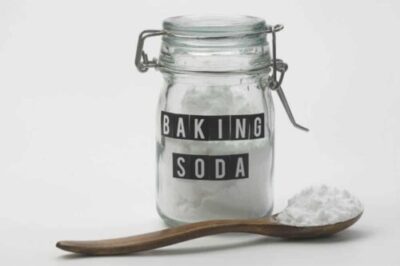When it comes to keeping a lawn in top condition – certain elements could stand in your way. For example, your lawn could easily fall victim to parasitic insects, weeds and, of course, moss.
Disclosure: This article may contain affiliate links – that means we may receive a commission if you make a purchase after clicking on these links. This is at no extra cost to you.
Although Moss is a relatively harmless substance, it can be very difficult to remove from your garden. In this article we discuss – does baking soda kill Moss?
This is because the chemicals used to kill moss are also capable of damaging the flowers, grass and trees you have planted.
This has led to many gardeners looking to alternative methods when it comes to the removal of moss – methods that include using household substances such as baking soda.
Can Baking Soda Kill Moss?
The short and simple answer to this question is yes – baking soda can be used to kill moss. But now you may be wondering how?
Baking soda, otherwise known as sodium bicarbonate, is a chemical compound that is commonly used in kitchens as a raising agent when baking cakes. However, baking soda is also an alkaline substance, which means it is capable of altering the Ph levels of acidic materials.
When you introduce baking soda to garden soil, the alkaline substance begins to react with the acidic properties of the earth, which increases the soil’s Ph levels. Most species of moss prefer to grow in environments with a Ph level of 5-6, which means the soil is slightly acidic.
Because baking soda is capable of increasing the Ph levels of the soil, it is also capable of altering the Ph levels of the moss and killing it. Baking soda is considered a popular moss-killer among gardeners because it can eliminate the moss without harming the other plants in your garden.
How To Apply Baking Soda?
Although baking soda can be scattered on the soil surrounding the moss, the best results come from applying the substance directly onto the moss itself.
You can do this in one of two different ways – either by applying the sodium bicarbonate as a straight powder or by diluting the baking soda in water and using it as a solution spray.
Before you apply the baking soda to the moss, you should always wear protective gloves that cover your hands and arms, especially if you are planning to cover a large area of the garden.
We also recommend testing the spray or powder on the grass and plants surrounding the moss, just to make sure it has no negative or harmful effects.
If you wish to apply the sodium bicarbonate as a powder, then you can directly sprinkle it on the intended moss. After you have done this, you should allow the baking soda to sit on the moss for several days, ensuring that it has been fully absorbed.
When you apply the baking soda, you should make sure that the moss is damp first, as moisture will help the powder to cling to the plant.
When intending to use the baking soda spray, you will first need to make the solution by mixing 2 tablespoons of baking soda with half a cup of water.
Stir the mixture until the baking powder has dissolved and then transfer it to a spray bottle. Spray the liquid directly onto the moss and then allow it to sit for a whole day.
The following day, you can apply a second spray of the solution to the moss, making sure to shake the bottle at regular intervals to keep the baking powder mixed with the water.
When the moss begins to discolor and turn brown, it is ready to be removed. You can do this by scraping it away from the surface it is growing on.
How To Get Rid Of Large Moss Patches?
Using baking soda in a spray can be a very effective way to eliminate moss from your garden, although it only works on small patches.
If your garden is plagued with large patches of moss, then applying the baking soda directly is the best solution.
You can do this by performing regular and continued applications of the baking soda to the large patches of moss. For the best results, you should always be applying the baking soda to the moss itself and not the soil surrounding it.
This process can take 2-3 months, but it will fully eliminate the large moss patches in your garden.


